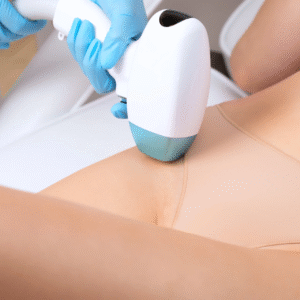Melasma is a challenging skin condition characterized by brown or grayish patches, commonly appearing on the face. Many patients in Islamabad turn to advanced options for relief, including professional Melasma Treatment in Islamabad. Among these options, laser treatments have gained popularity due to their precision and potential effectiveness. However, questions about the safety of laser treatments for melasma are common and important to address.
This article explores the safety profile of laser therapies for melasma, their benefits, potential risks, and how to ensure safe treatment outcomes.
Understanding Laser Treatments for Melasma
Laser treatments use focused beams of light energy to target and break down excess melanin pigment in the skin. Different types of lasers and light-based devices are used to treat melasma, including Q-switched lasers, fractional lasers, and picosecond lasers, each with unique mechanisms and suitability.
Laser therapy aims to reduce the appearance of pigmentation by selectively targeting melanin without damaging surrounding skin tissue. When performed correctly by trained specialists, lasers can provide significant improvement in melasma appearance.
How Do Laser Treatments Work?
Lasers emit specific wavelengths of light absorbed by melanin. This absorption causes the pigment to fragment into smaller particles that the body can eliminate naturally. Unlike topical treatments that act more slowly, lasers offer rapid and controlled pigment disruption.
However, the effectiveness and safety of laser treatments depend heavily on factors such as:
-
Skin type and tone
-
Depth and severity of pigmentation
-
Type of laser used
-
Treatment parameters and settings
-
Operator experience and technique
Are Laser Treatments Safe for Melasma?
Laser treatments can be safe and effective when administered by qualified professionals who understand melasma’s complexities. Nevertheless, melasma is notoriously difficult to treat because it often involves both superficial and deeper pigmentation layers.
Several factors affect safety and outcomes:
1. Skin Type Sensitivity
Patients with darker skin tones (common in Islamabad and South Asia) are more prone to side effects from lasers, such as post-inflammatory hyperpigmentation (PIH), where the skin darkens further after treatment. This risk necessitates cautious laser selection and conservative treatment settings.
2. Type of Laser
Certain lasers, like fractional lasers or low-fluence Q-switched lasers, are generally safer for melasma because they minimize damage to surrounding skin and reduce risks of PIH. Conversely, aggressive ablative lasers carry higher risks and are usually avoided.
3. Treatment Protocol
Safe laser treatment involves pre-treatment skin conditioning, gentle laser settings, and post-treatment care. Skipping these steps can increase complications such as redness, swelling, irritation, or pigmentary changes.
Common Side Effects and Risks
While laser therapy for melasma is generally safe, potential side effects include:
-
Redness and swelling: Usually mild and temporary.
-
Post-inflammatory hyperpigmentation: Darkening of the skin after treatment, which can be temporary or persistent.
-
Hypopigmentation: Lightening of the treated area, which can sometimes be permanent.
-
Skin irritation or sensitivity: Especially if skin is exposed to sun without protection.
-
Rare complications: Such as scarring or infection, which are very uncommon with proper care.
The likelihood of side effects decreases significantly when patients are evaluated properly and treated by experienced dermatologists or cosmetic specialists.
Importance of Pre-Treatment Consultation
A thorough consultation prior to laser treatment is critical for safety. During this consultation, specialists evaluate:
-
Skin type and melasma characteristics
-
Medical history and prior skin treatments
-
Expectations and treatment goals
Based on this evaluation, a personalized treatment plan is designed, often incorporating combination therapy with topical agents and strict sun protection.
Post-Treatment Care for Optimal Safety
Proper aftercare following laser treatment is essential to prevent complications and maintain results. Key recommendations include:
-
Avoiding direct sun exposure and using high-SPF broad-spectrum sunscreen daily.
-
Using gentle skincare products to reduce irritation.
-
Following any prescribed topical treatments or moisturizers.
-
Attending scheduled follow-ups to monitor healing and progress.
Neglecting post-treatment care can compromise safety and effectiveness.
Who Should Avoid Laser Treatments for Melasma?
Laser treatments may not be suitable for everyone. Contraindications include:
-
Pregnant or breastfeeding women
-
Individuals with active skin infections or inflammatory skin conditions
-
People prone to keloid scarring or poor wound healing
-
Those with recent tanning or sunburn
-
Patients using photosensitizing medications
Alternative melasma treatments may be recommended in such cases.
Alternatives and Complementary Treatments
Laser therapy is one among several treatment options. Others include:
-
Topical depigmenting agents such as hydroquinone, azelaic acid, or kojic acid
-
Chemical peels to exfoliate pigmented skin layers
-
Microneedling combined with topical treatments
-
Strict photoprotection and lifestyle adjustments
Combination approaches often yield the best results while minimizing risks.
Summary
Laser treatments for melasma offer promising results when chosen carefully and performed by experienced professionals. Although some risks exist, including pigmentary changes and skin irritation, adherence to proper protocols, patient selection, and diligent aftercare significantly enhance safety.
Patients should avoid self-treatment and seek expert evaluation to determine if laser therapy is appropriate for their skin type and melasma severity.
Conclusion
For residents of Islamabad seeking effective and safe melasma solutions, Melasma Treatment in Islamabad provides comprehensive care tailored to individual needs. The SKN Cosmetics clinic is recognized for its expert dermatologists and advanced laser technology, ensuring patients receive safe treatments with optimal results.






